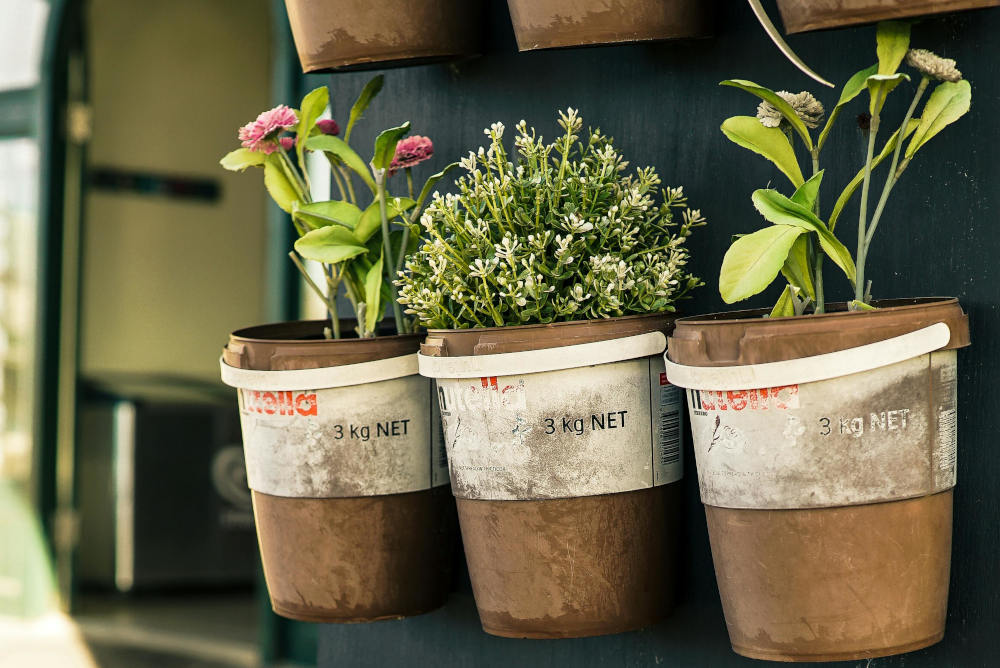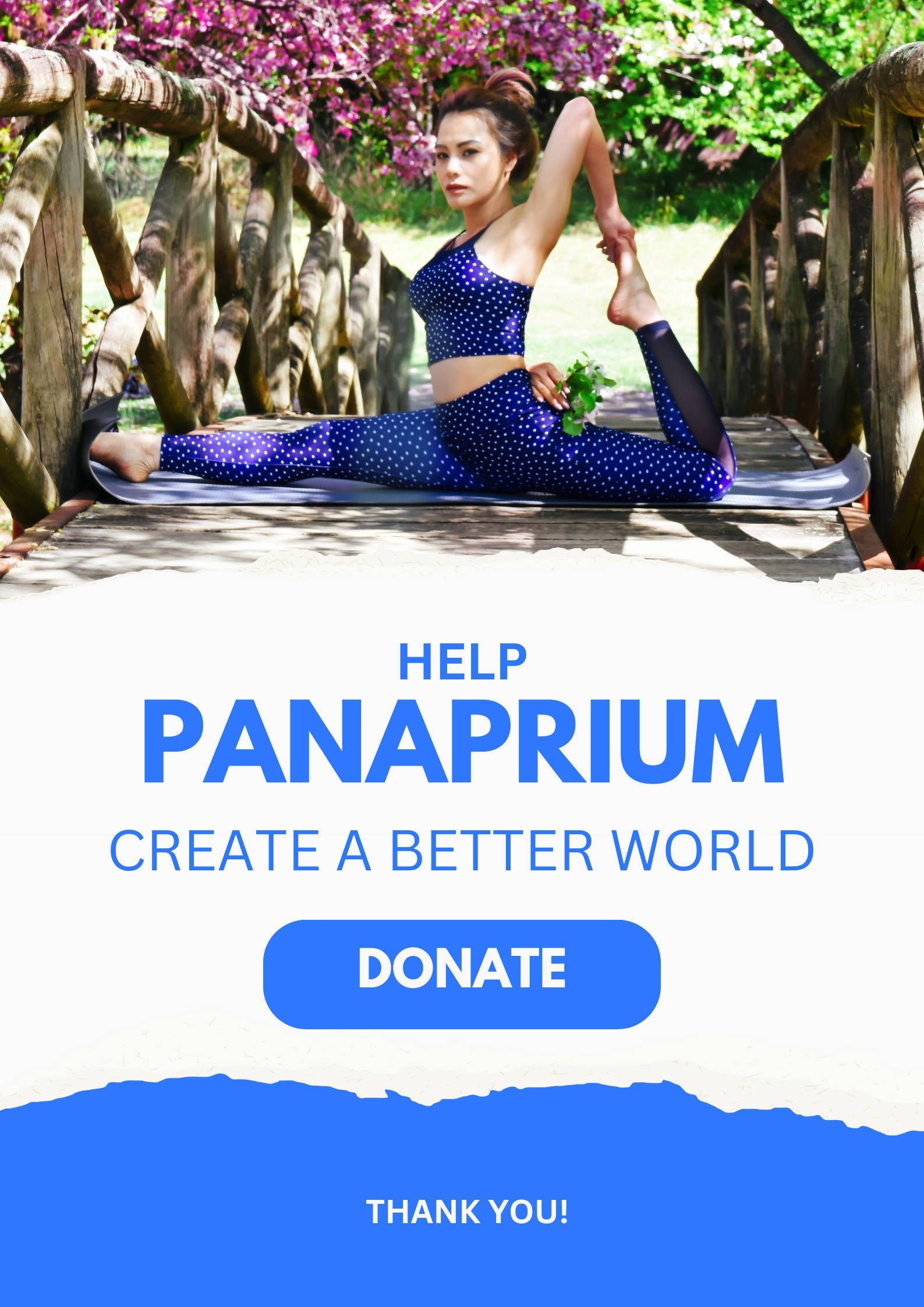
Growing herbs in pots is a rewarding and practical way to bring fresh flavors to your kitchen and fragrance to your garden. But what if you could boost the health of your herbs, attract pollinators, and enhance the look of your containers—all at once? That’s where planting flowers with herbs in the same pots comes in. Certain flowers not only complement herbs visually but also improve their growth through natural companionship.
In this article, we’ll explore the best flowers to plant with herbs in pots, the science behind companion planting, and how to set up successful mixed containers for a thriving and beautiful mini garden.
Panaprium is independent and reader supported. If you buy something through our link, we may earn a commission. If you can, please support us on a monthly basis. It takes less than a minute to set up, and you will be making a big impact every single month. Thank you!
Why Combine Flowers and Herbs in Containers?
Combining flowers and herbs isn’t just about aesthetics. There are several practical benefits:
1. Pest Control
Some flowers deter pests that commonly attack herbs. For example, marigolds are known to repel aphids and nematodes.
2. Pollinator Attraction
Flowers like calendula and nasturtiums attract bees and butterflies, which improve pollination for herbs like basil and thyme.
3. Improved Growth
Certain flower-and-herb combinations share nutrients well and can support each other’s growth. For example, shallow-rooted herbs can share space with deeper-rooted flowers.
4. Space Efficiency
Planting herbs and flowers together saves space—ideal for patios, balconies, or small gardens.
5. Beauty and Scent
Mixed pots offer a feast for the senses, combining visual interest with the lovely aroma of herbs and blooms.
Best Flowers to Plant with Common Culinary Herbs
🌿 Basil + Marigold
-
Why it works: Marigolds repel whiteflies and aphids that target basil. The cheerful orange and yellow blooms also attract bees for better pollination.
-
Growing tips: Both love full sun and well-draining soil. Water regularly, and deadhead marigolds to encourage blooming.
🌿 Thyme + Alyssum
-
Why it works: Sweet alyssum attracts beneficial insects like hoverflies, which feed on aphids. Thyme prefers a drier soil, and alyssum tolerates similar conditions.
-
Growing tips: Use shallow, wide pots. Allow the soil to dry slightly between watering. Both plants can spill over the sides of the container, creating a soft, cascading look.
🌿 Parsley + Nasturtium
-
Why it works: Nasturtiums act as a trap crop, attracting pests like aphids away from parsley. Their bright flowers add color and are edible, too.
-
Growing tips: Provide moderate sunlight and keep soil consistently moist. Trim regularly to prevent overcrowding.
🌿 Oregano + Zinnia
-
Why it works: Zinnias attract butterflies and bees, boosting pollination. Oregano’s spreading habit pairs well with the upright form of zinnias.
-
Growing tips: Full sun and good air circulation are key. Use a large pot to accommodate both plants’ growth.
🌿 Chives + Pansies
-
Why it works: Pansies are cool-season flowers that do well in spring and fall—the same seasons when chives thrive. Pansies also repel certain garden pests.
-
Growing tips: Partial to full sun, with regular watering. Chives will grow back year after year, while pansies offer seasonal beauty.
🌿 Mint + Petunia
-
Why it works: Petunias repel squash bugs and aphids, and tolerate some shade, like mint prefers. Mint’s spreading habit benefits from being confined in a container.
-
Growing tips: Use a deep pot, as mint is invasive. Keep petunias trimmed and fertilized to encourage blooming.
🌿 Rosemary + Lavender
-
Why it works: Both are Mediterranean herbs that thrive in dry, sunny conditions. Their fragrant flowers attract pollinators and repel some pests.
-
Growing tips: Use sandy, well-draining soil. Avoid overwatering. Choose a large container for good root space.
How to Choose the Right Flowers for Your Herbs
When mixing herbs and flowers in pots, consider the following:
🌞 Light Requirements
Group plants with similar sunlight needs. Most herbs like 6–8 hours of full sun per day, but a few (like mint or parsley) tolerate partial shade.
💧 Watering Needs
Match plants with similar moisture preferences. For example, don’t pair a drought-loving rosemary with water-hungry pansies.
🌱 Growth Habits
Combine upright plants with trailing varieties for visual interest. Avoid pairing aggressive growers that may crowd each other.
🌸 Bloom Time
Choose flowers with staggered bloom times to keep pots looking good throughout the season. Early bloomers like pansies can be swapped out with zinnias or marigolds as the weather warms.
Potting Tips for Success
1. Use Quality Potting Mix
Choose a well-draining potting mix. Herbs often prefer slightly gritty soil, especially Mediterranean types like oregano or rosemary.
2. Choose the Right Pot Size
Large containers (12”+ diameter) are better for mixed plantings. They retain moisture better and give roots more room.
3. Add Drainage
Ensure pots have drainage holes. Consider adding gravel or small stones at the bottom to prevent root rot.
4. Fertilize Lightly
Most herbs don’t like overly rich soil. Use a balanced organic fertilizer sparingly to support both herbs and flowers.
5. Prune Regularly
Trimming herbs encourages bushy growth and prevents flowers from taking over. Remove spent blooms from flowering plants to keep them looking fresh.
The Companion Planting Science
Companion planting is based on the idea that certain plants help each other grow. This concept has ancient roots—used by Native American tribes and across traditional European gardens.
For example:
-
Marigolds release a natural chemical into the soil that suppresses harmful nematodes.
-
Alyssum brings in predatory insects that eat garden pests.
-
Nasturtiums act as sacrificial plants, drawing aphids away from more vulnerable crops.
In pots, these relationships are magnified due to close proximity. However, you also need to monitor them closely since poor pairings can quickly become overcrowded or stressed.
Best Pot Combinations (by Theme)
🍽️ Culinary Pot
-
Plants: Basil, chives, oregano + marigold or nasturtium
-
Purpose: Harvest-friendly herbs with pest control and color
🐝 Pollinator Pot
-
Plants: Lavender, thyme, sage + zinnia or alyssum
-
Purpose: Attract bees, butterflies, and hoverflies for pollination
🧘♀️ Aromatherapy Pot
-
Plants: Mint, rosemary, lavender + calendula
-
Purpose: Enjoy fragrance and visual harmony on your balcony or windowsill
🌿 Low-Maintenance Pot
-
Plants: Rosemary, oregano + petunia or alyssum
-
Purpose: For busy gardeners who want tough, drought-tolerant beauty
Flowers to Avoid Planting with Herbs
Not all flowers are ideal companions for herbs. Here are a few to be cautious with:
-
Sunflowers: Can overshadow herbs and deplete nutrients.
-
Dahlias: Require rich soil and a lot of water, not ideal for Mediterranean herbs.
-
Geraniums (scented types): May compete with herbs for space and nutrients, and their fragrance can overpower culinary herbs.
Final Thoughts
Combining herbs and flowers in pots is more than just a space-saving hack—it’s a way to create small ecosystems that are productive, beautiful, and supportive of nature. By understanding which flowers benefit which herbs, and giving them the right conditions to thrive together, you’ll be rewarded with lush containers that look great and work hard.
Whether you’re growing on a sunny porch, a windowsill, or a small patio, try mixing and matching herbs with compatible flowers to enjoy the best of both worlds—fragrance and flavor, color and health.
Quick Reference Chart: Flowers and Their Herb Companions
| Flower | Best Herb Pairings | Benefits |
|---|---|---|
| Marigold | Basil, oregano | Repels aphids, attracts pollinators |
| Alyssum | Thyme, sage | Attracts hoverflies, easy to grow |
| Nasturtium | Parsley, chives | Trap crop, edible flowers |
| Zinnia | Oregano, rosemary | Attracts butterflies and bees |
| Pansy | Chives, parsley | Cool-season color, pest repellent |
| Petunia | Mint, oregano | Deters squash bugs, adds trailing color |
| Lavender | Rosemary, thyme | Fragrant, pollinator-friendly |
Was this article helpful to you? Please tell us what you liked or didn't like in the comments below.
About the Author: Alex Assoune
What We're Up Against
Multinational corporations overproducing cheap products in the poorest countries.
Huge factories with sweatshop-like conditions underpaying workers.
Media conglomerates promoting unethical, unsustainable products.
Bad actors encouraging overconsumption through oblivious behavior.
- - - -
Thankfully, we've got our supporters, including you.
Panaprium is funded by readers like you who want to join us in our mission to make the world entirely sustainable.
If you can, please support us on a monthly basis. It takes less than a minute to set up, and you will be making a big impact every single month. Thank you.































0 comments